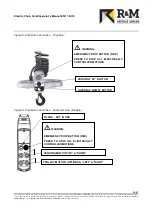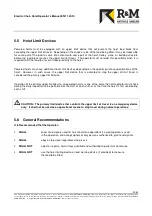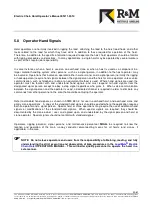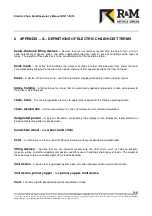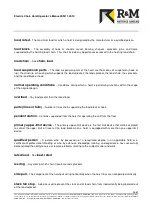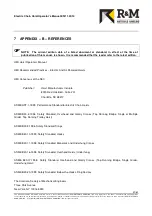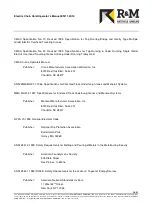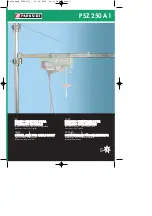
Electric Chain Hoist Operator’s Manual/EN/11.30.10
30/41
This document and the information contained herein, is the exclusive property of R&M MATERIALS HANDLING, INC. and represents a non-public, confidential and proprietary trade
secret that may not be reproduced, disclosed to third parties, altered or otherwise employed in any manner whatsoever without the express written consent of R&M MATERIALS
HANDLING, INC. . Copyright © (2010) R&M MATERIALS HANDLING, INC. . All rights reserved.
SHALL
avoid unnecessary inching and quick reversals of direction.
SHALL
only lift the load a few inches to verify that the load is properly
balanced before continuing with the lift.
SHALL
only lift the load a few inches to verify that the hoist braking system is
functioning properly before continuing with the lift.
SHALL
avoid swinging of the load or hoist load hook when the trolley
(if applicable) or hoist is traveling.
SHALL
avoid sharp contact between trolleys or between trolley and stops
(if applicable).
SHALL NOT
use the hoist load limiting device or load warning device (if provided)
to measure the load to be lifted.
SHALL NOT
use hoist limit devices as a normal means of stopping the hoist.
SHALL NOT
use the slip clutch as a normal means of stopping the hoist
SHALL NOT
permit continuous contact between the hoist body and the load block / slack fall stop.
5.4 Parking the Load
It is Recommended that the Operator:
SHALL NOT
lower a load with the hoist until the operator and all other personnel are
clear of the load and the path of the load.
SHALL
verify that the load will clear all obstacles before lowering the load.
SHALL
block loads before landing if slings or other lifting devices must be
removed from under the landed load.
SHALL
exercise care when removing a sling from under a landed and blocked load.
SHALL NOT
leave a suspended load unattended unless specific precautions to prevent
the load from inadvertent lowering have been instituted and are in place.
SHALL
position the hoist load block and load hook above head level for storage when
the hoist is not in use. Seven feet or greater above floor level is recommended.







